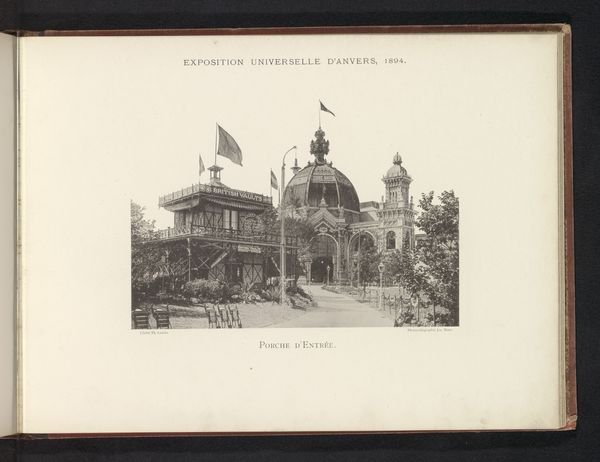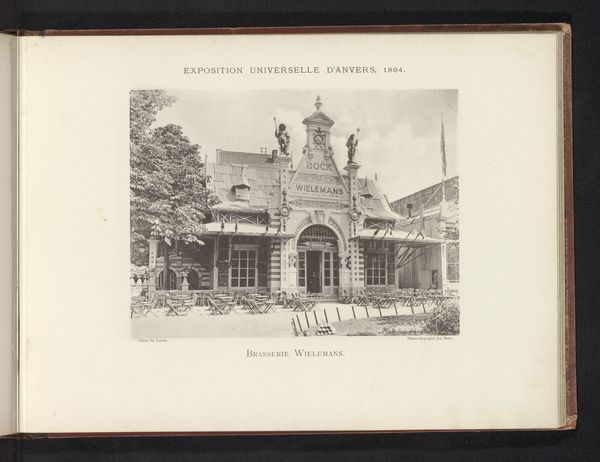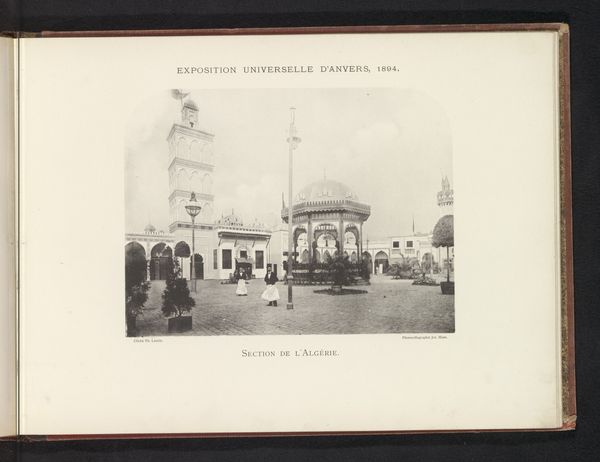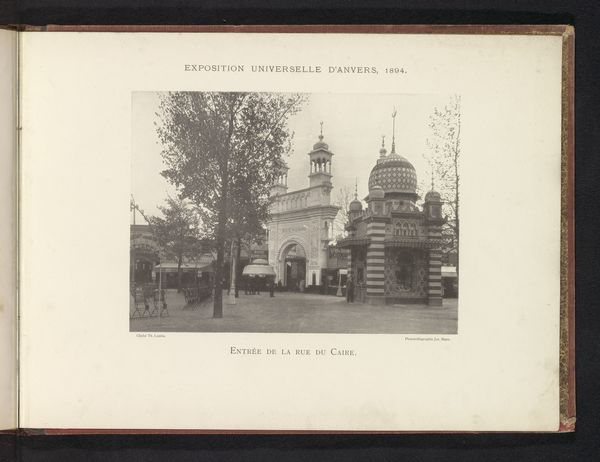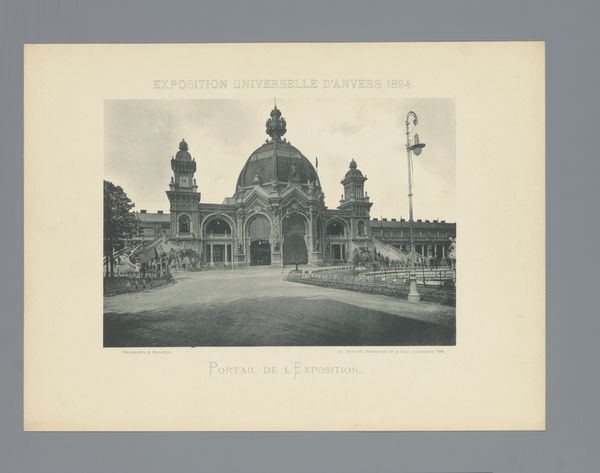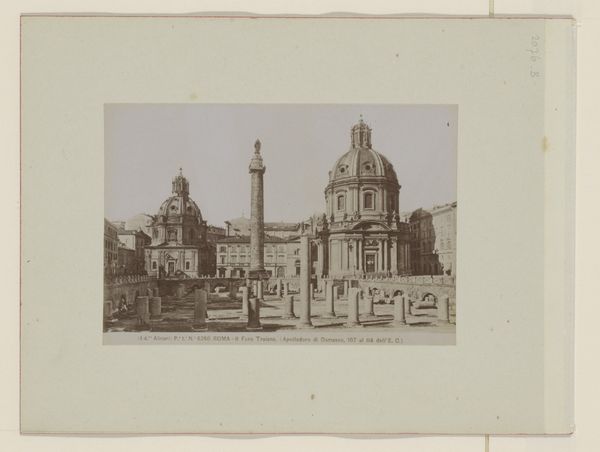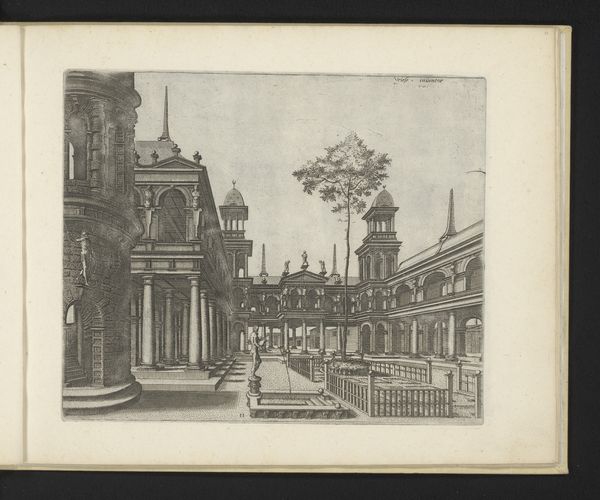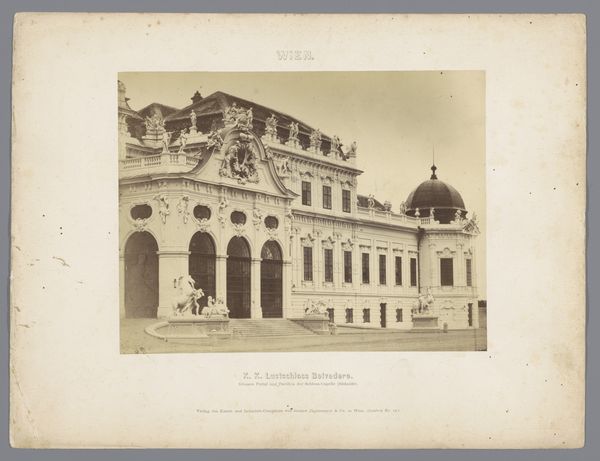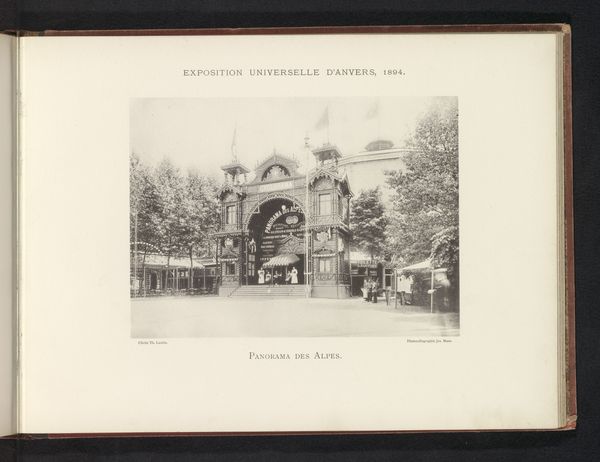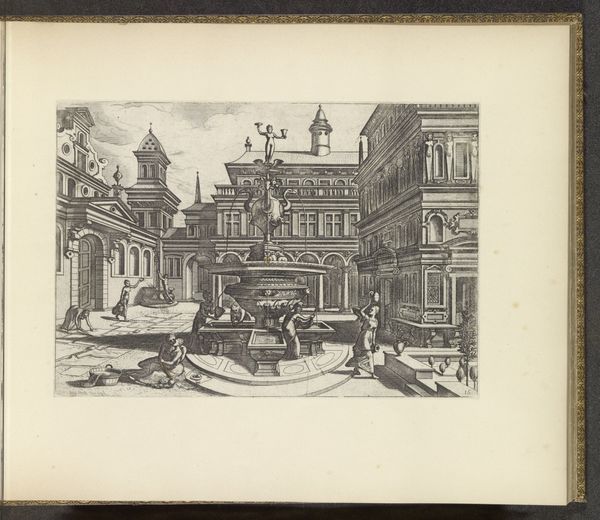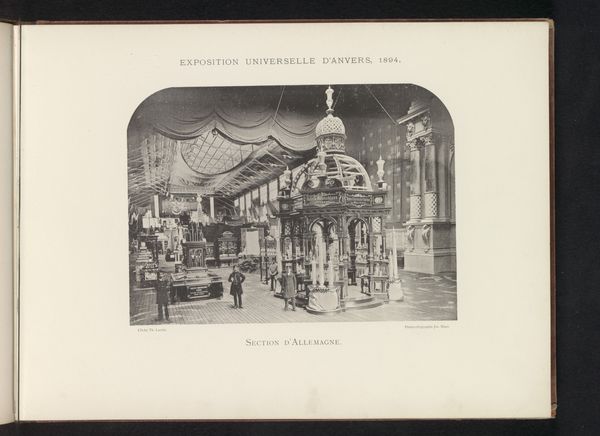
Dimensions: height 159 mm, width 219 mm
Copyright: Rijks Museum: Open Domain
Curator: Th. Lantin captured this photograph in 1894. Entitled "Gezicht op het toegangsportaal van de wereldtentoonstelling te Antwerpen"—"View of the Entrance Gate of the World's Fair in Antwerp"—it's an albumen print reflecting both Art Nouveau and Impressionistic influences. Editor: My initial impression is one of architectural grandeur tinged with fragility, even impermanence. The play of light and shadow creates a textured surface that emphasizes the elaborate details, yet it feels somewhat dreamlike. Curator: It's compelling to consider this World's Fair within the broader context of European expansion and industrial progress. Antwerp, as a major port city, became a stage for showcasing technological innovation and colonial ambitions, which intersected with prevailing cultural norms and class divisions. How did these dynamics shape public experiences and identities? Editor: I’m drawn to how Lantin utilizes the photographic medium itself. The focus isn't crystal-clear, but that almost feels deliberate, emphasizing atmosphere over precision. The tonal range, particularly in the highlights, imparts a sense of ethereal luminosity, suggesting a transition between material reality and ephemeral perception. It draws your eye to specific details. Curator: The choice to capture the entrance becomes significant when thinking about world's fairs as carefully constructed spaces. How were people invited to see or perform identities? Which voices were suppressed? We could understand this portal not just as an architectural feature, but also as a gateway to specific power structures. Editor: You know, I was wondering whether the composition intends to echo other familiar Beaux-Arts designs. The linear patterns and formal balance almost feel staged—perfect and artificial—despite its attempt at capturing a scene from everyday life. There's a beautiful dance of structure here. Curator: Thinking about who had access to these spaces then – considering factors like gender, race and socioeconomic background – illuminates how such expositions reproduced unequal social relations. The seemingly universal and celebratory narratives exclude many from the picture, literally and figuratively. Editor: It’s amazing how a seemingly straightforward architectural shot from Lantin invites such diverse viewpoints. Curator: Indeed. Studying these documents gives me a broader context with which to view art history, helping challenge entrenched views and build intersectional discussions around what can appear simply pretty.
Comments
No comments
Be the first to comment and join the conversation on the ultimate creative platform.
